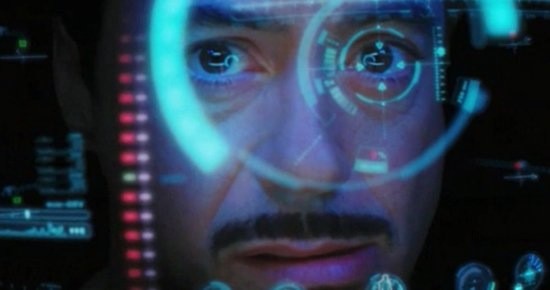Artificial Intelligence’s Killer App: Getting Things Done
You know what you never see in science fiction movies? Task management software. Why should Tony Stark mess around with stuff like Clear, Asana, or Getting Things Done™ when he can just bark vaguely worded orders at Jarvis, his artificially intelligent digital assistant? Obviously that makes for better visuals in the Iron Man franchise–but David Allen, creator and evangelist of GTD, is apparently working on a “meta-app” that sounds pretty darn Jarvis-like.

According to Fast Company, “What Allen has sought, for nearly three decades now, is a digital tool that actually abstracts list-making out of Getting Things Done, and offers instead more time to think about acting out the items on those lists.” In Allen’s own words, he laments the fact that “with (today’s) GTD ‘apps,’ you still have to think about what you want to accomplish… What I’m seeking is, could somebody, some system, please embody my intelligence about how I want to have data structured, and how I want it to come out?”
Allen is collaborating with Intentional Software on the still-secret app, and most of the interview consists of Allen’s hand-wavey descriptions of this “obsessively helpful, completely app-agnostic dashboard.” I highly doubt that whatever they’re cooking up can actually “embody [Allen’s] intelligence”, but the irony is that he’s actually onto something with that kind of talk. Why do high-powered executives and celebrities use human assistants as their primary “task management system”? Because it actually requires real intelligence to sort out what one’s “next action” should be from all the competing, constantly changing possibilities. Productivity software has its own “uncanny valley” problem: the closer it gets to intuitive, “human-like” behavior while still falling short (see: Siri), the more cumbersome and annoying it is to use. Which is why most of us just end up defaulting to the dumb-but-simple method of scribbling to-do’s down on Post-It notes (or their digital equivalent), even when more sophisticated tools are available.
What stresses us out about getting things done isn’t necessarily the doing, but the deciding. What Allen is envisioning–perhaps unintentionally–isn’t just a higher-tech notepad, but a kind of turn-by-turn navigation app for your life: you tell it what you want to accomplish, and the system figures out the “next actions” and feeds them back to you in the most helpful order. The trouble is that for such a system to work, it would need to be less of an app than an agent: ubiquitously available and connected, able to learn your preferences on the fly, interpret ambiguous or even contradictory input, and act pre-emptively on your behalf.
Software that could do all of this wouldn’t merely make your life easier: it’d be artificial intelligence’s holy grail. Which means David Allen is going to have to wait a lot longer than three decades for his ultimate productivity tool. But at least he’s calling a spade a spade: in order for software to truly “free our minds” from the stress of decision-making, it will have to have a mind of its own. Anything less is just building a better Post-It note.
Keep Reading
Most Popular
Large language models can do jaw-dropping things. But nobody knows exactly why.
And that's a problem. Figuring it out is one of the biggest scientific puzzles of our time and a crucial step towards controlling more powerful future models.
The problem with plug-in hybrids? Their drivers.
Plug-in hybrids are often sold as a transition to EVs, but new data from Europe shows we’re still underestimating the emissions they produce.
Google DeepMind’s new generative model makes Super Mario–like games from scratch
Genie learns how to control games by watching hours and hours of video. It could help train next-gen robots too.
How scientists traced a mysterious covid case back to six toilets
When wastewater surveillance turns into a hunt for a single infected individual, the ethics get tricky.
Stay connected
Get the latest updates from
MIT Technology Review
Discover special offers, top stories, upcoming events, and more.